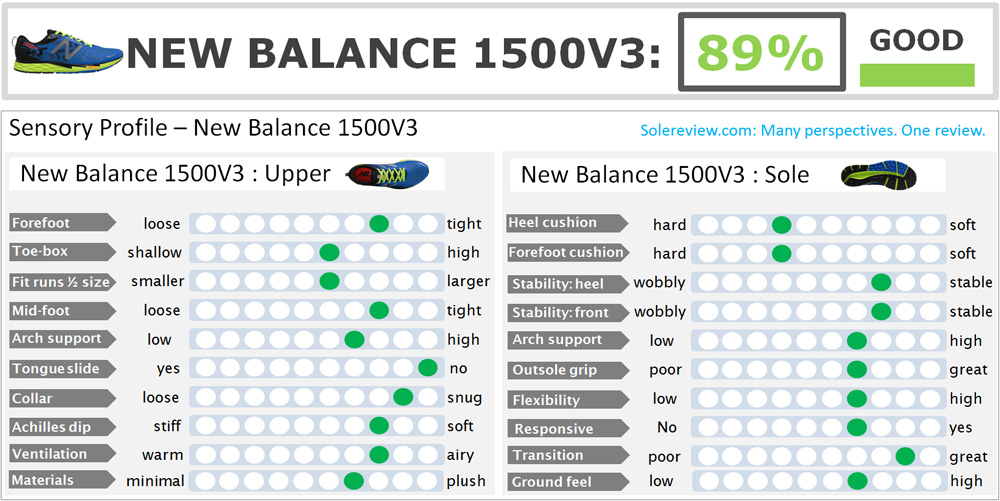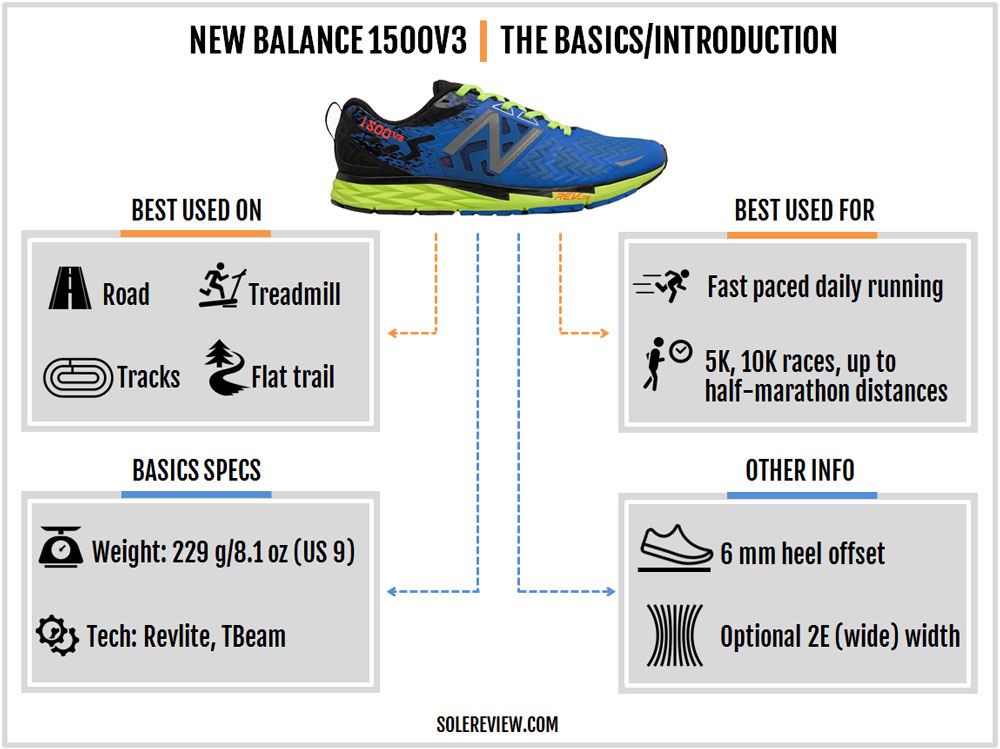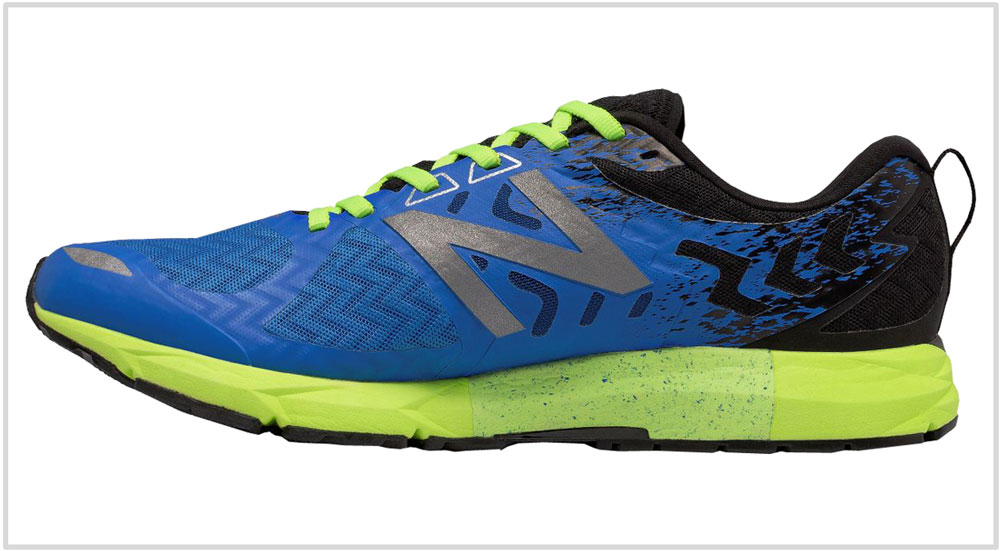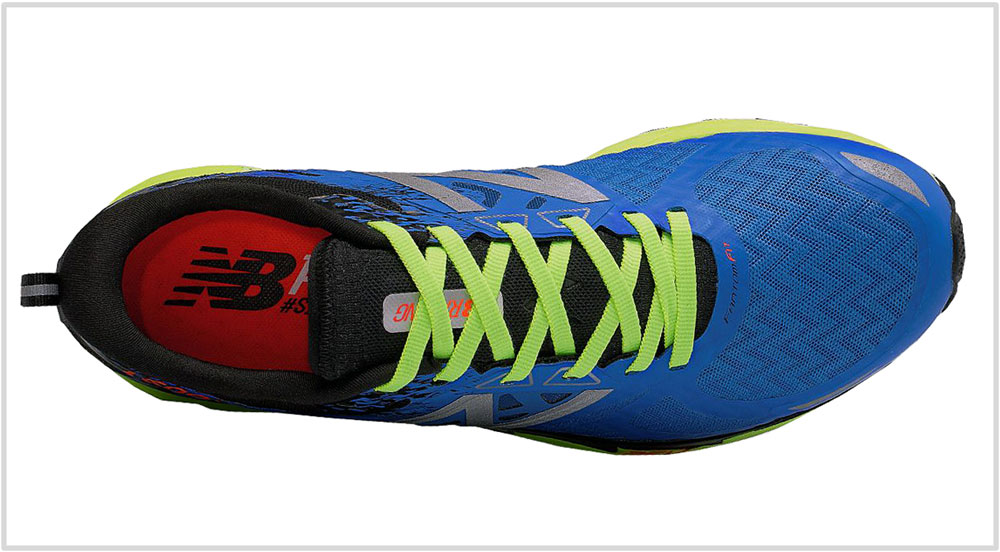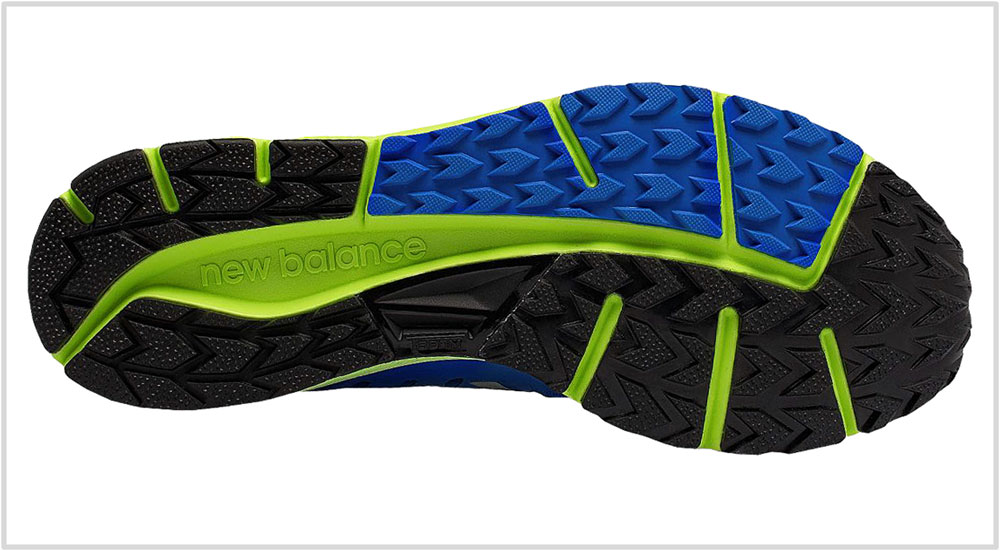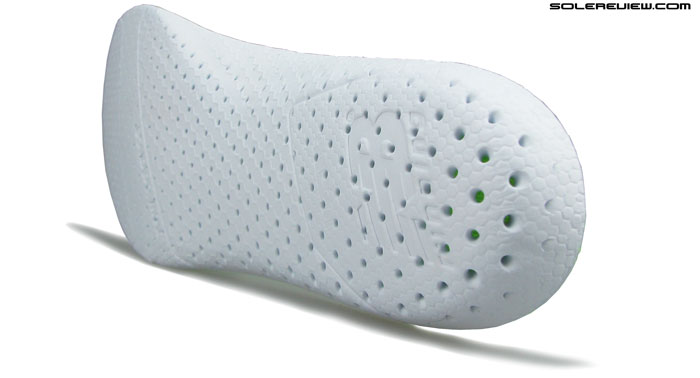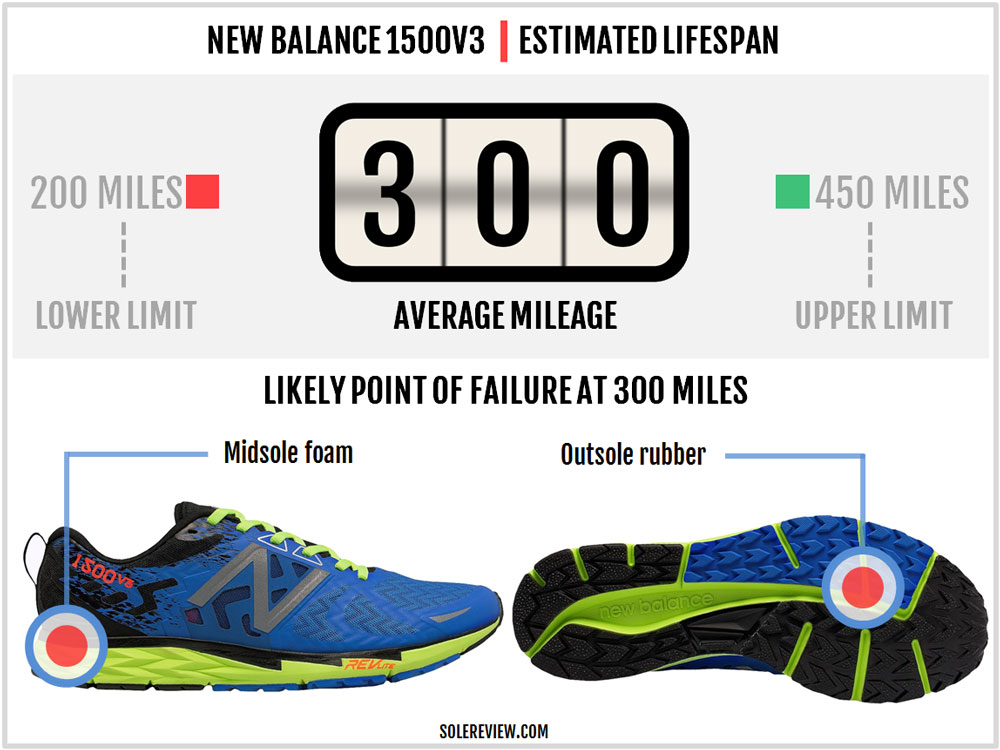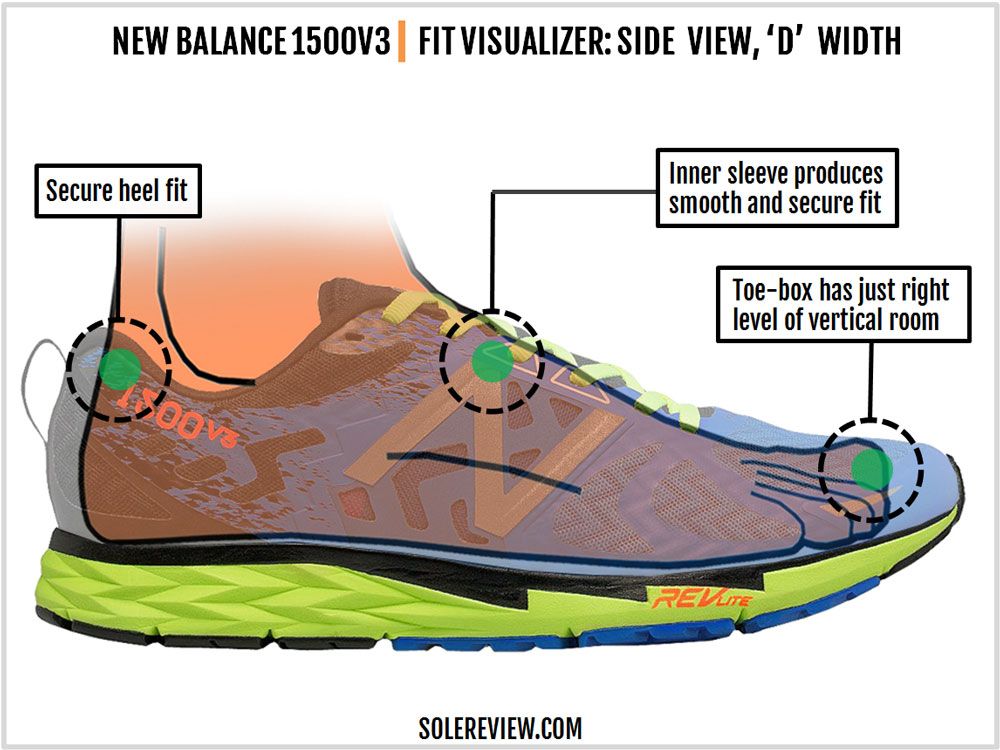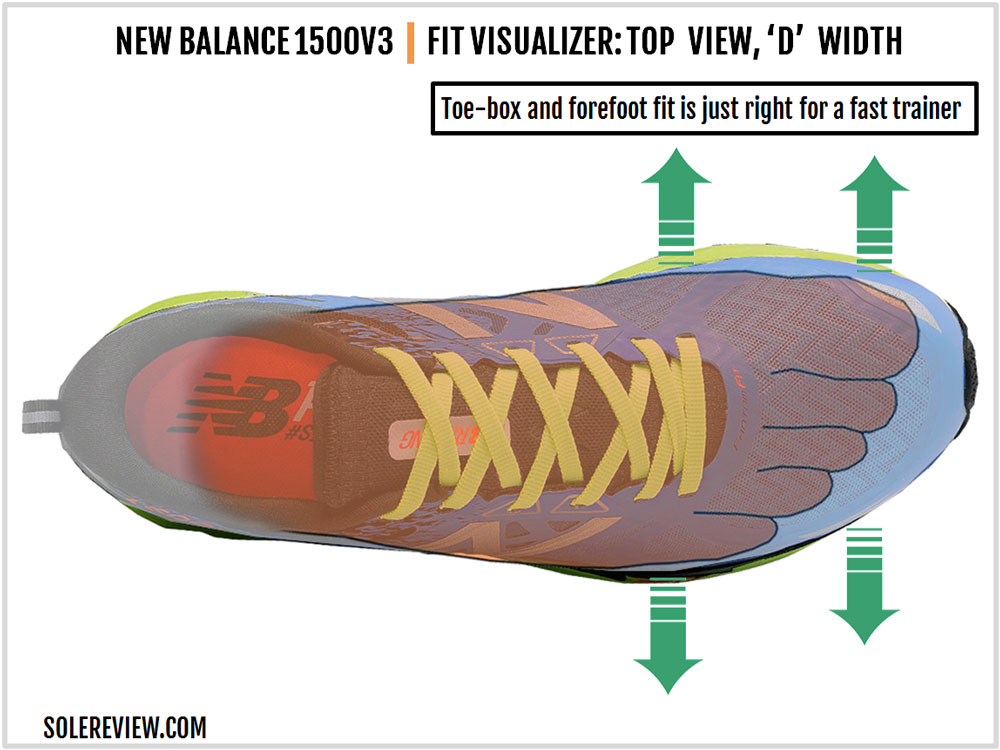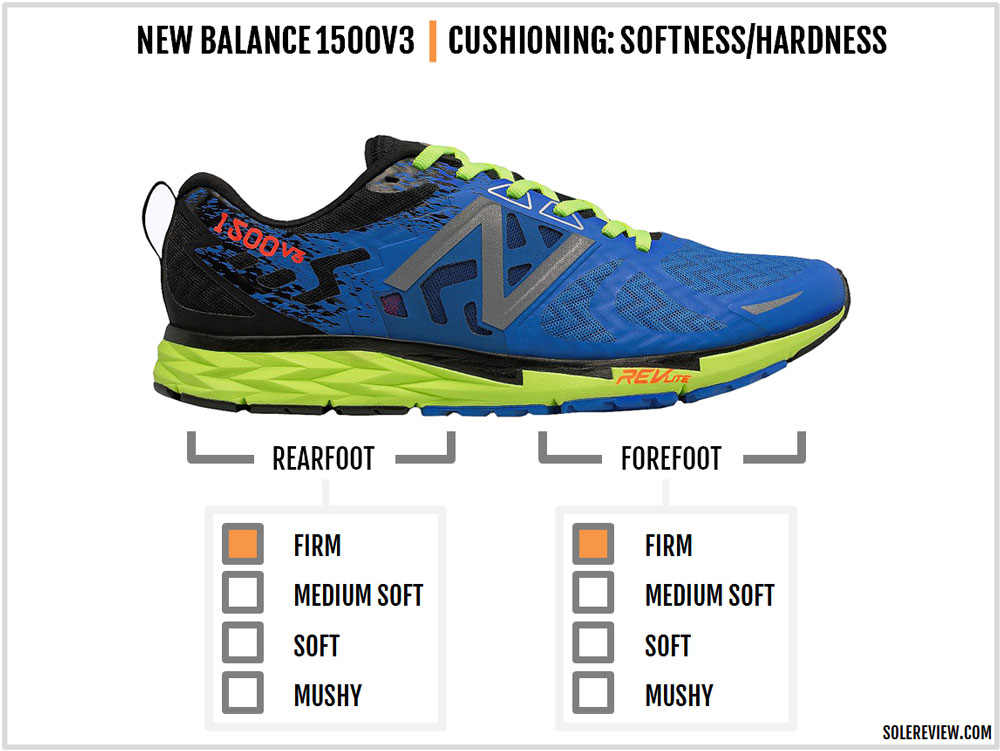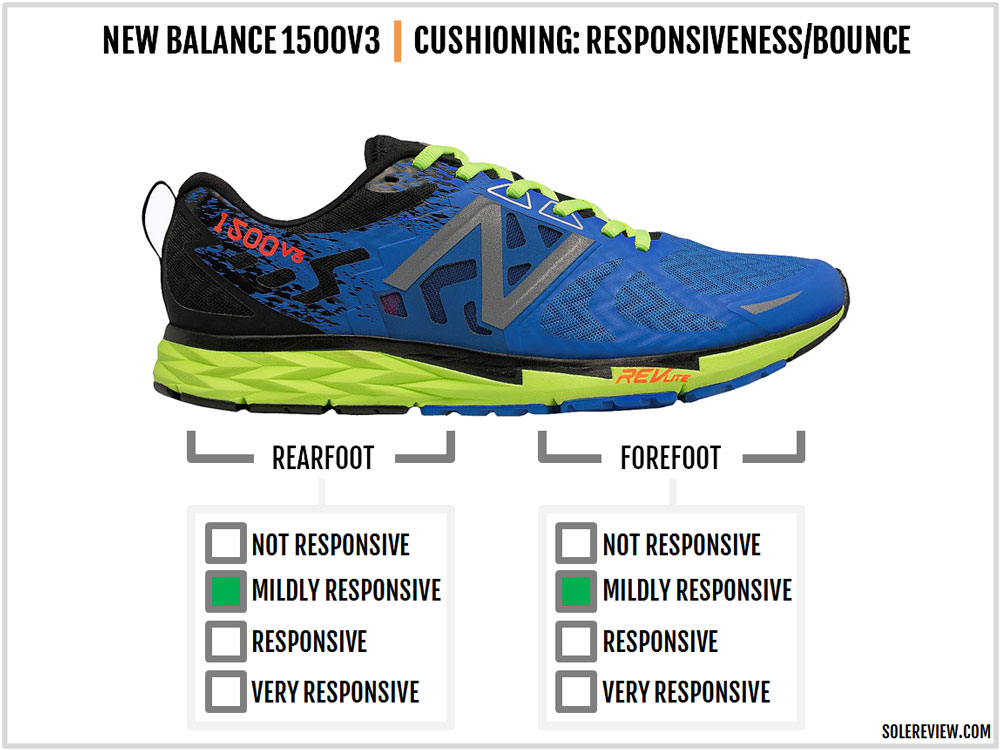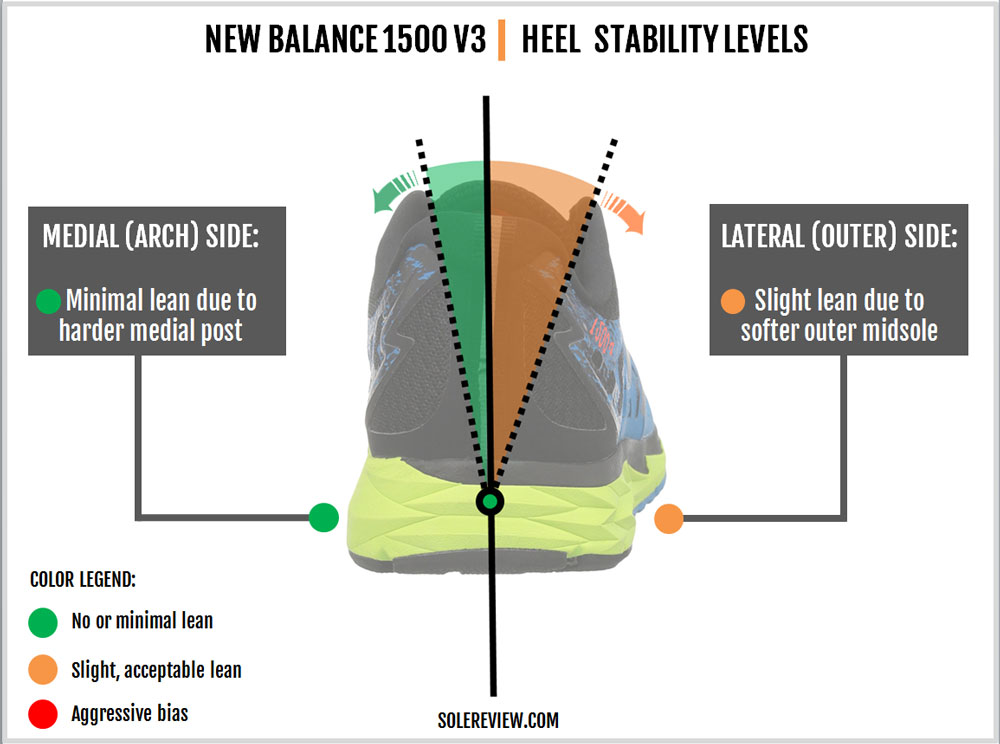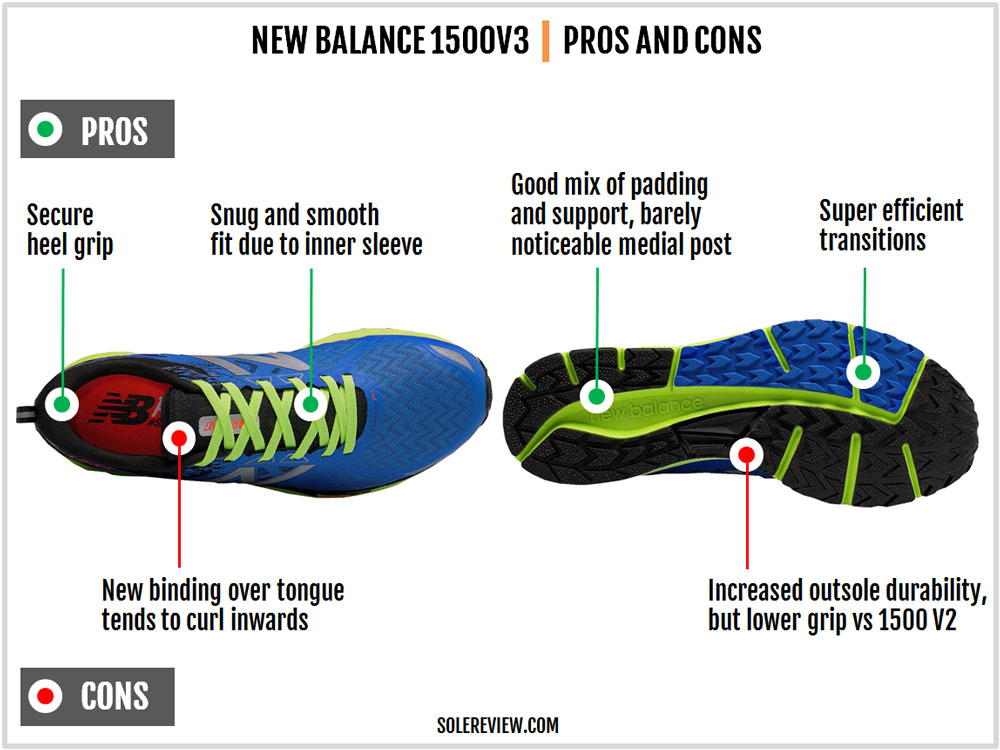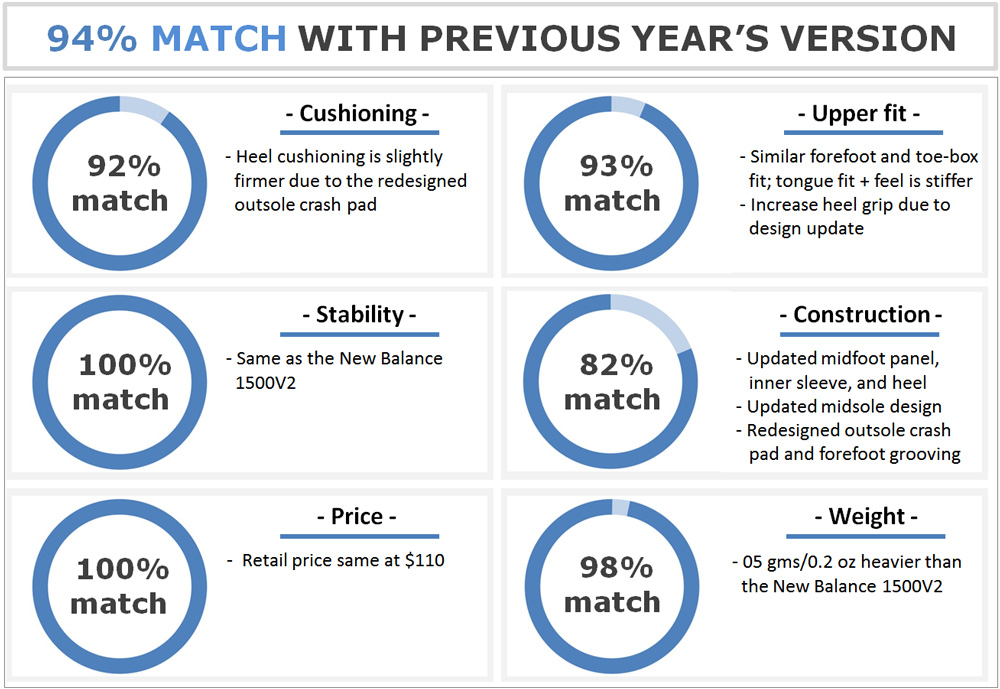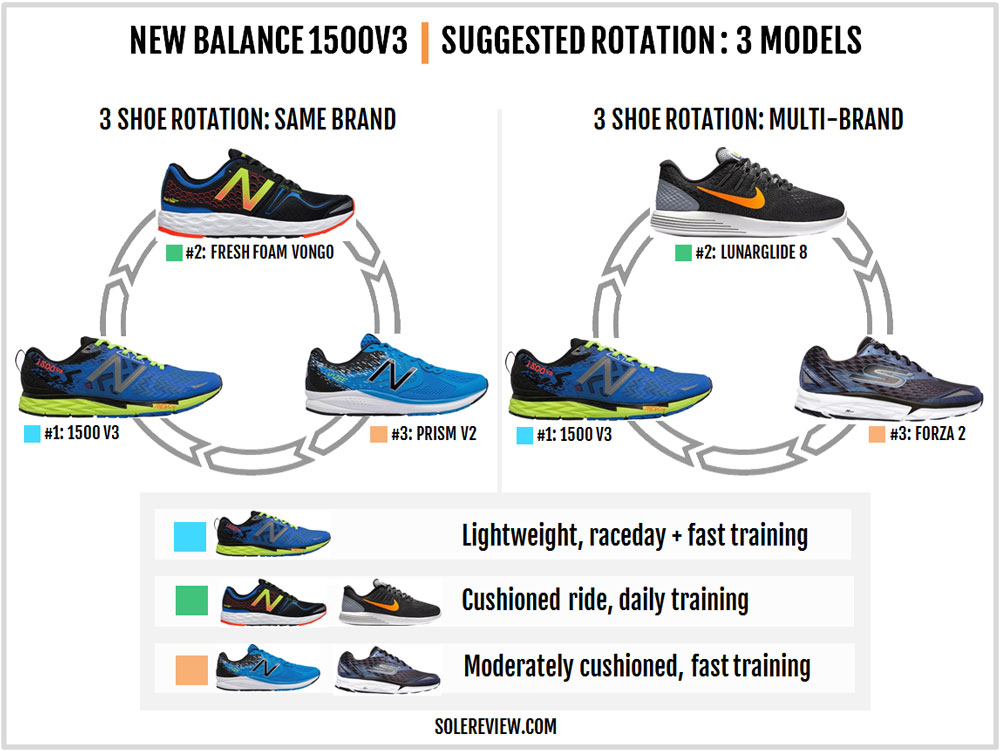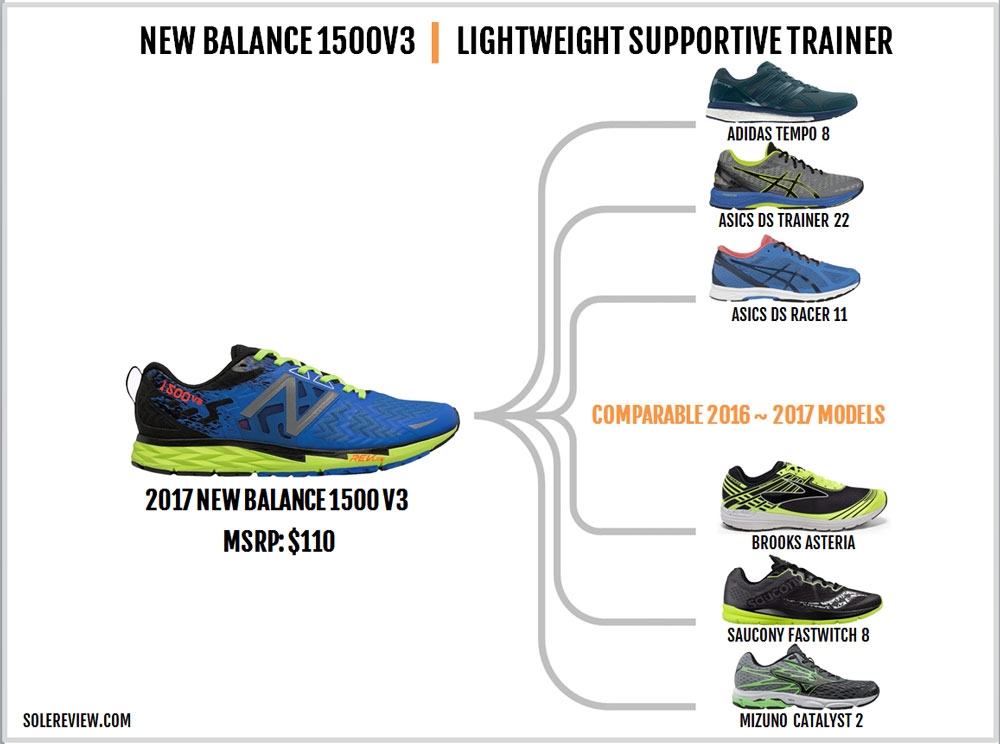INTRODUCTION
It can get frustrating when brands mess up a brilliant shoe. The New Balance Fresh Foam Zante V1 to V2 was one such misstep, but here’s a little-known secret: it is currently near-impossible to incorporate consumer feedback from the first model into the next. That’s due to the extremely long lead-times involved in creating new running shoe designs; by the time the first model gets market feedback, the design for the next version is already locked and loaded.
In that context, we’ve been fortunate with the New Balance 1500 series. The V1 edition was near perfection, and the 1500 V2 carried over most of the V1’s goodness intact. And what exactly would that goodness be?
The New Balance 1500 isn’t a full-blown racing flat. It’s one step away from racing flat minimalism, which means that there’s more cushioning than a flat but far less than a regular trainer. The 1500 isn’t halfway between a trainer and a flat either; it is closer to a thoroughbred racer.
Another thing which sets the 1500 apart is the presence of a firmer medial post. Not many shoes (this close to a flat) feature a support wedge; what’s more, the 1500’s medial post is barely noticed. This broadens the 1500’s appeal to a larger group of runners, regardless of those who prefer neutral or support shoes.
The V3 retains a lot of what established the 1500 series but makes a few tweaks to the upper and the midsole. You’d have noticed that we gave the V3 a slightly lower score than the V1 and V2. That’s due to a small upper design change which we thought was unnecessary.
DESIGN AND MATERIALS
One of the things which made the first two 1500 editions great was the ‘Fantomfit’ based upper. ‘Fantomfit’ is geek speak for New Balance’s upper design which involves using fused layers instead of stitched overlays. This isn’t exclusive to the 1500, but used across the NB line, as seen here and here.
Relying on fused layers eliminates (most) inner seams, a process which makes the interior fit smooth and comfortable. The 1500v3 uses the same fused layers on a textured mesh, though of a slightly different kind. Over the forefoot, the layers are thicker than the V2, and toe-bumper uses more synthetic too.
The midfoot sides feature thick panels with cut-outs for ventilation. A thinner mesh is used to cover these vents, a design which allows the air to circulate. At the rear, there’s an internal heel counter along with a reflective strip running up the center.
The 1500 V1 did not have an inner sleeve attached to the tongue. The V2 did, and for a good reason. While it is a given that an inner sleeve makes the interiors comfortable, the additional material helped smooth the bump of the midfoot seam.
There’s an inner sleeve used on the 1500V3 except that New Balance makes a couple of changes to this arrangement. The sleeve and tongue are now joined as one component; this wasn’t the case on the V2. As a result, the fabric binding seen on the V2’s inner sleeve now forms the tongue flap too.
This is where the 1500 V3 loses a few scoring points. Not only is the tongue edge a bit firmer than the V1 and V2, but the flap tends to curl inwards. Since the tongue is now fully integrated with the sleeve, it is harder to stretch it flat over the foot. This isn’t very user-friendly, and this design change was made just for the sake of it.
New Balance has raised the collar (heel) height of the 1500’s upper, and this increases the quality of heel grip by a notch. Honestly, we did not think either the V1 or V2 to be lacking in heel grip, but the updates made to the V3 might please runners who felt otherwise.
Along with the tongue sleeve design, the V3 gets a brand new lining fabric. It is comfortable and well quilted with foam, but lacks the soft hand-feel of the melange textile used on the V1 and V2.
The tongue is bonded together with the foam inside, and has triangular windows cut-outs for ventilation. You can see this concealed under the flat laces.
Reflectivity is found in abundance over the 1500V3’s upper. The toe-bumper has a small trim, and the strip over the heel is reflective. The side logos are a high visibility type, and so is the strip fused on the tongue top.
Shoe for shoe, the 1500 V3 has more synthetic over its upper than the V2. This is visible in the form of the broader midfoot panel and thicker forefoot layers. This, however, doesn’t have as much as an impact on the upper fit quality as one would imagine.
Sure, the midfoot fit comes across as having more structure over the V2. The forefoot fit doesn’t change much, though. It’s a bit of give and take here. The forefoot layers turn thicker, but at the same time, the first row of lacing moves away from the toe-area. Unlike the V2, the first row does not pass through a loop and reverts to the V1’s design.
The 1500 uses a ‘Revlite’ EVA foam variant to construct most of its midsole. There’s a firmer medial wedge co-molded on the inner side, but is much shorter than the kind you would normally encounter. The medial post is limited to only the under-arch area.
In other words, the rearfoot has an almost-neutral construction. You don’t feel the medial post for the most part. The inner midsole has a solid sidewall profile for increased support over the outer side. On the outer side, the midsole has sharper detailing with grooves molded in for better compression.
The midsole has a firm density, and this is consistent with previous versions of the 1500. The firm foam quality contributes to the 1500’s ‘fast’ feel, keeping transitions quick and efficient.
Some softness is provided by the removable insole placed inside the upper. This molded EVA foam sockliner is the same as last year, featuring a perforated construction which allows for easier compression. There is another layer of foam just below it, so the 1500 isn’t entirely bereft of cushioning softness.
The rubber outsole uses a tried-and-tested combination of hard rubber (back) and blown rubber (front), with a plastic half-shank on one side of the midfoot. The surface is covered with arrow-shaped outsole lugs, and there is plenty of articulation.
There’s a deep and wide groove running through the center, and the outsole has flex grooves at regular intervals. Deep grooves are cut into the forefoot on both sides, and the outer rearfoot crash pad has a series of grooves too.
The whole outsole set-up looks familiar at first glance, but a closer examination reveals a few tweaks over the 1500 V2. To begin with, the center groove doesn’t extend all the way up to the toe like the V1 and V2 did, and stops under the ball of the foot.
Secondly, the rubber crash pad under the rearfoot is missing a flex groove near the heel edge, and the rest of the grooves are shorter in length. As is the nature of things, the redesigned crash pad makes the rearfoot landings a mite firmer than the 1500 V1 and V2.
Lastly, the lug design has changed and so has the grip level. The V1’s forefoot had these small nib-like outsole lugs; the V2 used the nibs on only the half the forefoot; the 1500 V3 changes the entire outsole texture using larger, arrow-shaped lugs.
Not that you’ll notice the grip difference between the three versions – unless you’re running on synthetic tracks. Because if so, the 1500 v3 feels less sticky over the tight bends than the V1 or V2.
On roads, the new lug design makes no grip difference. The upside is increased durability because the larger lugs last longer than the smaller nibs.
For a shoe of this weight category, an expected lifespan of 300 miles is reasonable. The midsole is well protected by the generous application of outsole rubber, though over time the performance of the midsole foam will degrade.
An interesting observation noted by one of our contributing reviewers is that the small medial-post isn’t noticeable at first, but after 300 miles that might change. The softer midsole foam will compress first, while the harder medial post is more resistant to compression. This can make the medial post noticeable over time. However, whether this happens or not depends on your usage pattern and running form.
The larger, arrow-shaped outsole lugs do not wear as quickly as the smaller nibs (of the V1) did.
UPPER FIT AND FEEL
One of the things we’ve loved about the 1500 so far has been its superior quality of upper fit. The fit quality is neither too tight nor too loose, and upper snugness is just right for a shoe of this category. You don’t want your foot to be swimming around when you’re clocking speedy miles.
The 1500 retains the same fit quality, albeit with a few tweaks. The toe-box height is perfect, as the ceiling just skims over your big toe. This area is slightly shallower than the V2, but same as the 1500V1. This occurs due to the increased usage of fused synthetic over the bumper vs. the V2.
The midfoot has a snug feel. The inner sleeve fills up the interiors on either side of the midfoot, and the larger synthetic midfoot panel provides outer support. Remember that the inner sleeve is larger than last year, so that increases the level of midfoot wrap.
As mentioned earlier, the tongue flap design isn’t very friendly due to the newly acquired binding. It’s a bit stiff near the edges and tends to curl inwards.
The heel has a secure quality of fit. The combination of the hard internal counter and foam-padded lining grips the foot well, and better than the 1500 V1 and V2.
There isn’t much to report on the (sideways) forefoot and toe-box fit. The upper holds the foot securely, no matter what the speed. The 1500 isn’t a roomy shoe, and that’s perfectly ok. When going fast, a somewhat narrow fit works better than the relatively cavernous interiors of a standard trainer.
The upper lies flush over the small toe, but due to the seamless upper construction the snugness does not result in discomfort. There is an optional 2E (wide) available for the 1500 V3, but we don’t recommend buying that unless you find the ‘D’ width uncomfortable.
RIDE QUALITY AND BEHAVIOR
One of the reasons why the 1500 has proved to be successful is the shoe’s ability to blend lightweight cushioning with a fast feel. This means that while the midsole is undeniably a firm kind, it doesn’t feel like a true racing flat.
The molded insole and lasting work together to deliver cushioning softness, and the deep grooves on the outsole splay out on impact – hence contributing to the cushioning feel. In the front, the blown rubber sheet keeps forefoot landings and transitions padded.
While the 1500V3 is great for shorter (and fast) runs, it works equally well on races up to a half-marathon distance.
The 1500 feels mildly responsive due to a variety of factors. By itself, the midsole – which is made out of Revlite EVA – isn’t particularly responsive. The mild springiness of the 1500 comes from the resilient, compression-molded insole and the outsole design.
The groove splitting the outsole into two halves produces a mild ‘trampoline’ effect, and the molded insole feels slightly responsive. In other shoes, both these factors would not have made a difference, but here it does.
You see, the 1500’s firm midsole isn’t very thick. So the insole and outsole groove ends up playing an important role in the overall scheme of things, thus resulting in a mildly responsive behavior.
Since the inner midsole features both the hard medial post and the solid sidewall, the 1500V3’s compression is biased towards the outer side. Nothing wrong with that since most shoes behave that way. The compression bias is within acceptable limits, and the forefoot feels sure and planted. The outsole groove also helps keep the foot centered and along the motion path.
Transitions/progressions – be it heel to toe or the other way around – feel connected. The firm midsole has no sink spots, and the midsole material is consistent all along. The outsole is also a full contact type; there are no gaps to slow you down. The colony of flex grooves cut into the outsole also help smoothen the ride.
PROS AND CONS
There are a lot of good things to say about the 1500 V3. The upper fit is good even by New Balance standards; the amount of interior space is well spread throughout the shoe.
Using a no-sew ‘Fantomfit’ and an inner sleeve makes the insides very smooth. The tongue design isn’t perfect though, and we wish New Balance had stuck to using the 1500 V1 and V2 template instead of trying to fix what wasn’t broken.
You’ll like how the 1500 behaves on the road. The low-stack midsole comes across as swift and supportive without the over-bearing motion-control behavior which usually accompanies medially posted shoes. This near-neutral character broadens the shoe’s versatility, which is good.
The outsole grips great on roads, though on tracks the grippy micro-lugs of the 1500 V1 are sorely missed.
SUMMARY
The V3 being a minor update, there’s not a lot to talk about in this section. The MSRP stays the same at $110, and the V3 is only a few grams heavier than the V2. The overall ride, be it stability or the transition quality is very similar to the 1500 V2.
There are only a couple of important changes over the V2. The rearfoot outsole crash pad loses a flex grooves or two, and this turns the ride a bit firmer. Apart from that, New Balance dials up the heel and midfoot grip level; this happens due to the reworked upper heel area.
RECOMMENDED ROTATION
Considering that the 1500 V3 isn’t a motion-control shoe in the traditional sense, the latter is better accompanied with mild-support shoes.
For example, a Fresh Foam Vongo and 1500V3 pairing works well when you need two shoes – one for speedwork and another for longer runs. The Fresh Foam Vongo is supportive without an intrusive medial-wedge, and its Fresh Foam platform provides plenty of cushioning for higher mileage races and workouts.
Though in 1500’s case, we don’t find a three-shoe rotation necessary. However, if you want to bridge the gap between the Vongo and the 1500, then give the Vazee Prism V2 a try. Again, this is a mild-support shoe with a level of cushioning which is midway between the Vongo and 1500.
The Nike Lunarglide virtually established the mild-support category in 2009. It was one of the first support (and cushioned) shoes not to feature a regular medial post. The Lunarglide 8 is a major model refresh over the LG6 and LG7 but still works great as a mild cushioned-support shoe if you’re interested.
The Skechers GoRun Forza 2 fills in the gap between the 1500V3 and the Lunarglide. The thicker midsole has more cushioning than the 1500 but is firmer than other Skechers models in the GoRun series.
OTHER LIGHTWEIGHT TRAINERS WITH MILD SUPPORT
Perhaps the best known shoes in this category are the Asics duo of the DS Trainer 22 and the DS Racer 11. Both are lightweight fast-training shoes with a medial post; the DS Trainer has a bit more cushioning than the Racer 11 which is closer to a racing flat.
The 1500 feels like somewhere in between the DS Trainer and Racer. The 1500 has a tad less cushioning than the DS Trainer, but packs more bulk than the Racer 11. Nonetheless, both Asics shoes are worth considering when you’re shopping around for a shoe of this category.
The adizero Tempo 8 is the support version of the popular adizero Boston. It’s got more cushioning and responsiveness over the 1500, so if you feel that the 1500 isn’t going to meet your long mileage needs, then the Tempo 8 is a good choice. It has a longer lifespan than the 1500 due to its ultra-durable outsole.
Other lightweight support offerings would include the Brooks Asteria with its small medial wedge and a firm ride; the Saucony Fastwitch 8 racer, and finally the Mizuno Wave Catalyst 2. Mizuno introduced the Catalyst last year as an unofficial replacement for the Wave Elixir.

